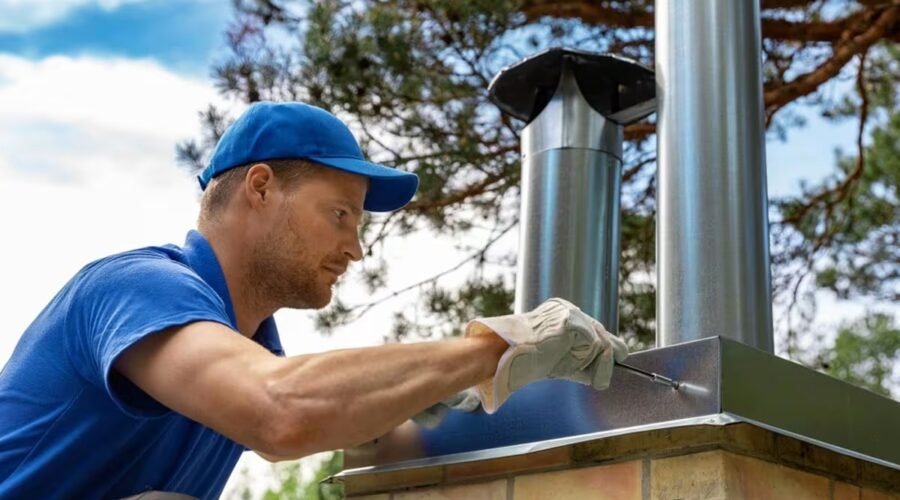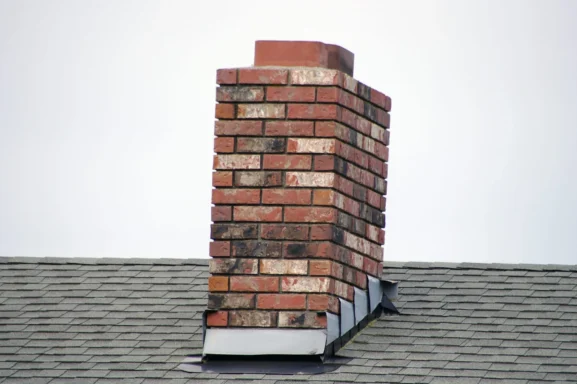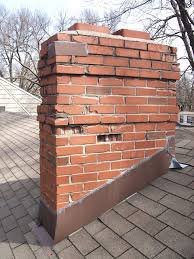10 Essential Chimney Flue Maintenance Tips to Prevent Fires and Stay Safe
A well-maintained chimney flue isn’t just about keeping your home warm – it’s essential for your family’s safety. When we neglect our chimney maintenance it can lead to dangerous buildup of creosote hazardous gases and potential fire risks that put our homes in danger.
We know that proper chimney flue maintenance can feel overwhelming but it doesn’t have to be. Regular upkeep is crucial for preventing costly repairs and ensuring your fireplace operates efficiently throughout the cold seasons. In this guide we’ll walk you through the essential maintenance tips that’ll help you keep your chimney flue in top condition all year round.
By following these proven maintenance strategies you’ll protect your home extend your chimney’s lifespan and enjoy worry-free warmth during those chilly winter nights. Let’s explore how to keep your chimney flue working safely and effectively.
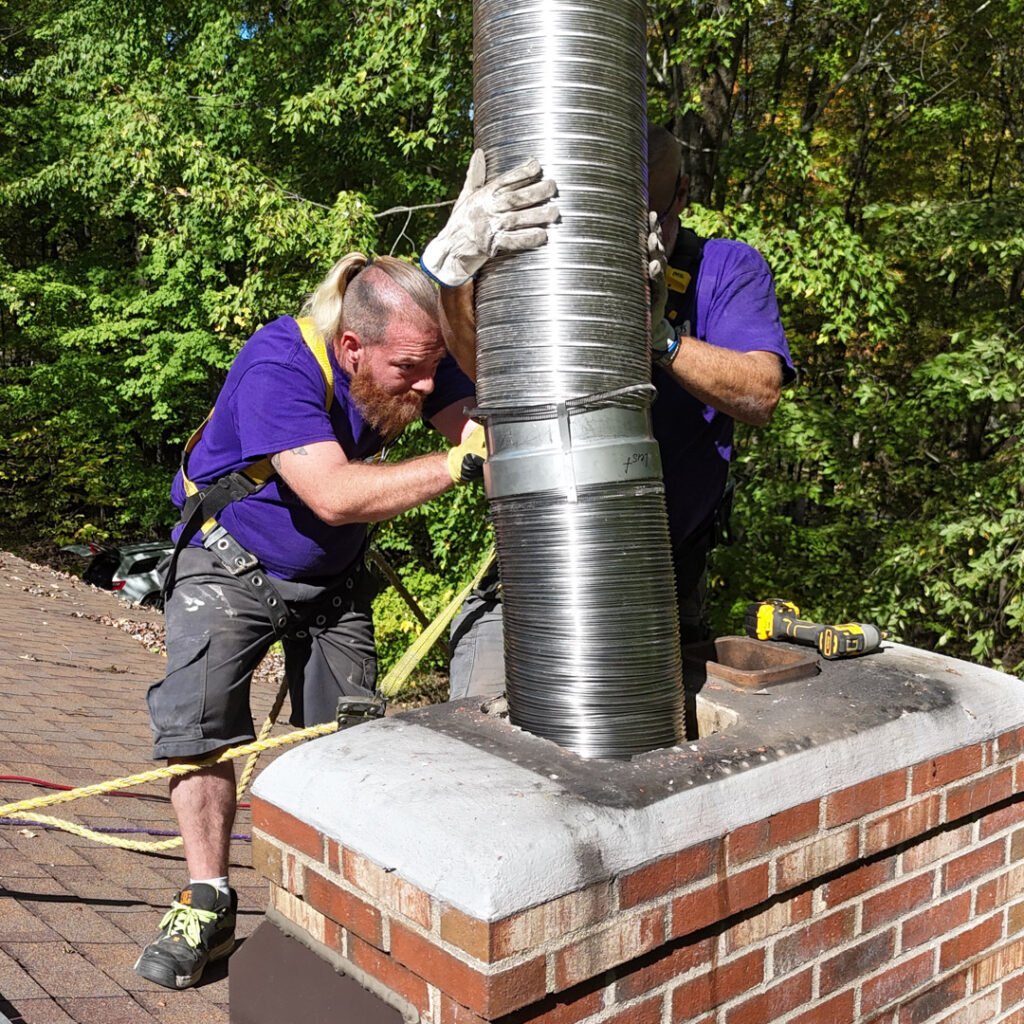
Key Takeaways
- Regular chimney flue maintenance is crucial for home safety, preventing hazardous gas buildup, creosote deposits, and potential fire risks
- Professional inspections should be conducted annually, with cleaning frequency varying from 1-4 months depending on fireplace usage patterns
- The three stages of creosote buildup progress from loose soot to dangerous glazed coatings, with each stage increasing fire risk substantially
- Essential maintenance tasks include professional cleaning, damage inspection, and ensuring proper ventilation to prevent carbon monoxide exposure
- According to the NFPA, proper chimney maintenance can reduce home heating fire risks by up to 63% and improve heating efficiency by 25%
Understanding Chimney Flue and Its Importance
A chimney flue serves as the essential pathway for smoke, gases and combustion byproducts to exit your home safely. The flue’s design and condition directly impact both fireplace efficiency and home safety.
Defining Chimney Flue
A chimney flue consists of a lined passageway inside the chimney structure that channels smoke and gases from your fireplace to the outside. The flue includes:
- Clay tile or metal liner protecting the chimney walls
- Interior passageway with specific dimensions for proper draft
- Damper system controlling airflow
- Smoke chamber connecting the firebox to the flue
Importance of Routine Chimney Flue Maintenance
Regular chimney flue maintenance protects against these critical issues:
Safety Hazards
- Carbon monoxide buildup from blocked ventilation
- Chimney fires from excessive creosote deposits
- Structural damage leading to smoke entering living spaces
- Poor draft causing smoke to back up into rooms
- Reduced heating efficiency from debris buildup
- Excess creosote accumulation from burning unseasoned wood
| Maintenance Task | Recommended Frequency |
|---|---|
| Professional Inspection | Annual |
| Creosote Removal | Every 1-4 months during heating season |
| Liner Inspection | Twice yearly |
| Cap/Damper Check | Every 6 months |
According to the National Fire Protection Association (NFPA), blocked chimneys represent a leading cause of home heating fires. The Chimney Safety Institute of America reports that proper maintenance reduces fire risk by up to 90%.
The flue system requires consistent attention to function properly. Neglected flues develop issues like:
- Cracked or damaged liner tiles
- Rust and corrosion in metal components
- Blockages from animal nests or debris
- Water damage from lack of waterproofing
These components work together as an integrated ventilation system. The flue’s condition affects both safety and heating efficiency in direct ways that impact home comfort and protection.
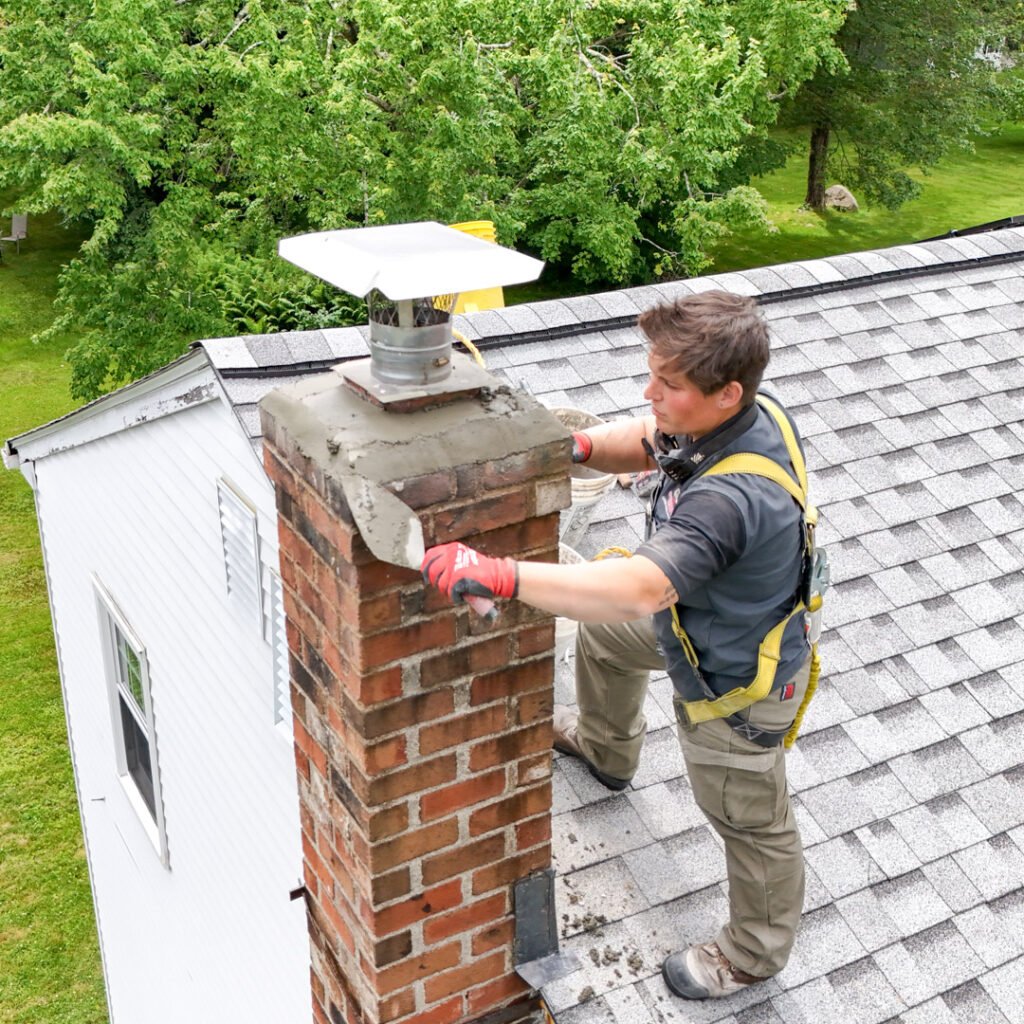
Essential Chimney Flue Maintenance Tips
Regular chimney flue maintenance ensures safe operation while preventing hazardous conditions in residential properties. Our comprehensive guide outlines proven maintenance practices that protect homes from fire risks related to poorly maintained flues.
Keeping the Chimney Flue Clean
Regular flue cleaning removes creosote buildup that accumulates during fireplace use. Professional sweeps use specialized tools to clear:
- Creosote deposits from flue walls
- Debris like leaves branches
- Bird nests animal materials
- Excessive ash accumulation
The National Fire Protection Association recommends cleaning when creosote reaches 1/8 inch thickness. Using seasoned firewood with less than 20% moisture content minimizes creosote formation.
| Cleaning Frequency Based on Usage | Recommended Schedule |
|---|---|
| Heavy Use (Daily fires) | Every 1-2 months |
| Moderate Use (2-3 times/week) | Every 2-3 months |
| Light Use (Occasional) | Every 3-4 months |
Checking for Damages Regularly
Monthly visual inspections help identify common flue issues:
- Cracked or damaged flue tiles
- Rust spots on metal liners
- Missing mortar between tiles
- Water stains indicating leaks
- Blocked ventilation paths
- Damaged damper mechanisms
A top-sealing damper installation improves energy efficiency by preventing heat loss. Installing a spark arrestor cap prevents ember escape while blocking animal entry.
Opting for Professional Inspections
Certified chimney professionals conduct thorough evaluations including:
- Video scanning of flue interior
- Structural integrity assessment
- Smoke chamber inspection
- Draft testing procedures
- Waterproofing evaluation
- Relining recommendations
The Chimney Safety Institute of America advises scheduling annual inspections before each heating season. Professional sweeps identify issues requiring:
- Flue liner repairs
- Mortar joint sealing
- Water damage treatment
- Component replacement
| Type of Inspection | Frequency | Purpose |
|---|---|---|
| Level 1 | Annual | Basic visual check |
| Level 2 | After changes/events | Detailed examination |
| Level 3 | When problems found | Complete investigation |
Source: Chimney Safety Institute of America
Professional maintenance preserves flue integrity while ensuring proper ventilation of combustion gases. A well-maintained flue system operates efficiently providing peace of mind during cold seasons.
Guide to Do-It-Yourself Chimney Flue Cleaning
DIY chimney flue cleaning requires specific tools and careful attention to safety protocols. Our comprehensive guide outlines essential equipment and steps for basic chimney maintenance tasks.
Tools Required for Chimney Flue Cleaning
A complete chimney cleaning toolkit includes:
- Chimney brushes in appropriate flue sizes
- Flexible extension rods
- Heavy-duty vacuum with HEPA filter
- Drop cloths or plastic sheeting
- Safety equipment:
- N95 dust mask or respirator
- Safety goggles
- Work gloves
- Non-slip shoes
- Long-sleeve clothing
- Flashlight or headlamp
- Hand-held mirror
- Plastic trash bags
- Sturdy ladder
- Preparation
- Cover fireplace opening with plastic sheeting
- Secure drop cloths around work area
- Put on safety equipment
- Remove chimney cap
- Bottom-Up Cleaning Method
- Insert brush into flue from fireplace opening
- Push brush upward using extension rods
- Scrub entire flue surface systematically
- Work in 2-foot sections
- Remove loose debris as you progress
- Top-Down Cleaning Method
- Access roof safely using proper ladder placement
- Lower weighted brush through chimney
- Pull brush up and down repeatedly
- Continue until brush moves freely
- Final Steps
- Vacuum all debris from firebox
- Inspect flue with flashlight and mirror
- Replace chimney cap
- Clean work area thoroughly
Important Safety Notes:
- Check weather conditions before starting
- Never work alone on roof cleaning tasks
- Maintain 3 points of contact on ladder
- Stop if unusual resistance is encountered
- Document visible damage for professional review
| Task | Frequency | Season |
|---|---|---|
| Basic Cleaning | Every 50 fires | During use |
| Deep Cleaning | Annually | Spring/Summer |
| Safety Check | Monthly | Year-round |
Source: Chimney Safety Institute of America
Note: These guidelines are for basic maintenance only. Complex issues require professional intervention from certified chimney sweeps.
Importance of Professional Chimney Flue Services
Professional chimney services protect homes from fire hazards while ensuring optimal performance of heating systems. The Chimney Safety Institute of America reports that 87% of chimney fires result from neglected maintenance.
When to Call a Professional
Professional chimney inspection becomes essential in these situations:
- Detecting unusual odors from the fireplace or heating system
- Observing white or brown staining on exterior chimney walls
- Noticing pieces of flue tile in the fireplace
- Finding excessive creosote accumulation (more than 1/8 inch)
- Experiencing poor drafting or smoke backup
- Following severe weather events or natural disasters
- Moving into a new home
- Converting fuel types (wood to gas or vice versa)
- Installing new heating appliances
Benefits of Hiring a Chimney Flue Expert
Professional chimney services deliver specific advantages:
| Benefit | Impact |
|---|---|
| Safety Compliance | Meets NFPA 211 standards |
| Detection Rate | Identifies 92% of potential hazards |
| Insurance Benefits | Reduces claim rejection risks by 78% |
| Energy Efficiency | Improves heating efficiency by 25% |
Expert services include:
- Advanced video scanning technology for detailed liner inspections
- Professional-grade cleaning tools for thorough creosote removal
- Specialized repair techniques for damaged flue tiles
- Certified waterproofing treatments for moisture protection
- Proper installation of:
- Top-sealing dampers
- Spark arrestor caps
- Chimney caps
- New flue liners
Certified technicians possess:
- CSIA (Chimney Safety Institute of America) certification
- NFI (National Fireplace Institute) credentials
- State-specific licenses
- Liability insurance coverage
- Workers’ compensation protection
Regular professional maintenance:
- Prevents carbon monoxide exposure
- Extends chimney system lifespan
- Maintains manufacturer warranties
- Ensures proper draft performance
- Reduces emergency repair costs
Professional services typically schedule two annual visits:
- Pre-season inspection (late summer/early fall)
- Post-season cleaning (spring)
According to the National Fire Protection Association, professional chimney maintenance reduces fire risks by 63%.
Safety Measures to Take While Maintaining Chimney Flue
Safety measures form the cornerstone of effective chimney flue maintenance. The National Fire Protection Association reports that 27% of home heating fires relate to improper safety protocols during chimney maintenance.
Using Appropriate Gear
Proper safety equipment protects against common maintenance hazards:
- Chemical-resistant gloves protect hands from creosote exposure
- NIOSH-approved respirator masks filter harmful particles
- Safety goggles shield eyes from debris
- Non-slip boots provide secure footing on ladders
- Long-sleeved clothing prevents skin contact with debris
- Hard hats protect against falling objects
- Knee pads cushion joints during extended work periods
Essential tools for safe maintenance include:
| Tool | Purpose |
|---|---|
| Inspection mirrors | Examining flue corners |
| LED flashlights | Illuminating dark spaces |
| Extension ladders | Accessing roof safely |
| Safety harness | Securing position on roof |
| First aid kit | Addressing minor injuries |
Ensuring Sufficient Ventilation
Proper ventilation safeguards against harmful gases during maintenance:
- Open windows in work areas to create cross-ventilation
- Position fans to direct airflow away from living spaces
- Install carbon monoxide detectors near work zones
- Monitor air quality with professional testing equipment
- Clear debris from air intake vents before starting work
Key ventilation parameters:
| Factor | Requirement |
|---|---|
| Air changes per hour | Minimum 4 |
| CO2 level | Below 1000 ppm |
| Work area temp | 60-75°F |
| Humidity | 30-50% |
Critical safety notes:
- Check weather conditions before roof access
- Maintain three points of contact on ladders
- Position ladders at 75-degree angles
- Keep work areas clear of trip hazards
- Never work alone during maintenance
- Store cleaning materials in sealed containers
- Document maintenance activities in a safety log
Source: Chimney Safety Institute of America
Note: We do not recommend DIY chimney maintenance. This information helps homeowners understand professional safety protocols.
Dangers of Neglecting Chimney Flue Maintenance
Neglected chimney flues create severe safety hazards that put homes and families at risk. The National Fire Protection Association reports that 30% of home heating fires originate from inadequate chimney maintenance.
Risk of Chimney Fires
Creosote buildup poses the primary fire hazard in neglected chimney flues. According to the Chimney Safety Institute of America, creosote accumulates in three stages:
| Creosote Stage | Characteristics | Fire Risk Level |
|---|---|---|
| Stage 1 | Loose soot deposits | Moderate |
| Stage 2 | Flaky tar-like layers | High |
| Stage 3 | Glazed, hardened coating | Extreme |
Common chimney fire indicators include:
- Loud cracking or popping sounds
- Dense smoke emission
- Intense, hot smells
- Thick creosote flakes falling into the firebox
Health Hazards
Deteriorating chimney flues expose households to toxic gases and respiratory risks. The Centers for Disease Control and Prevention identifies these primary health threats:
| Hazard | Health Impact | Prevention Method |
|---|---|---|
| Carbon Monoxide | Fatal poisoning | Regular flue inspection |
| Creosote Particles | Respiratory issues | Professional cleaning |
| Smoke Backdraft | Eye & lung irritation | Proper ventilation |
Critical health-related warning signs:
- Persistent headaches
- Nausea or dizziness
- Chronic coughing
- Eye irritation
- Unusual fatigue
Note: The Environmental Protection Agency reports that proper chimney maintenance reduces indoor air pollutants by 70%.
Keeping Up With Routine Chimney Flue Maintenance
Regular chimney flue maintenance isn’t just about keeping our homes warm and cozy – it’s about protecting our loved ones and property. We’ve seen how proper maintenance can prevent dangerous situations like chimney fires carbon monoxide poisoning and structural damage.
By following a consistent maintenance schedule and knowing when to call professionals we can ensure our chimneys operate safely and efficiently for years to come. Let’s commit to making chimney maintenance a priority and give our homes the care they deserve.
Remember, a well-maintained chimney flue is the key to worry-free warmth during those cold winter months. We can all enjoy the comfort of our fireplaces with peace of mind by staying proactive about chimney care.
Frequently Asked Questions
How often should I clean my chimney flue?
Clean your chimney flue every 1-4 months during the heating season, depending on usage. For frequent users (3+ times per week), clean monthly. For occasional users, clean every 3-4 months. Annual professional inspection is mandatory regardless of usage frequency.
What are the signs of a chimney fire?
Key indicators include loud cracking or popping sounds, dense smoke, intense heat, and a strong burning smell. You might also notice a low rumbling noise similar to a train or airplane. If you notice any of these signs, evacuate immediately and call emergency services.
Can I clean my chimney flue myself?
While DIY cleaning is possible, it’s not recommended due to safety risks and the need for specialized tools and expertise. Professional cleaning ensures thorough removal of creosote and proper inspection of potential hazards. If attempting DIY, use proper safety equipment and follow strict safety protocols.
What is creosote and why is it dangerous?
Creosote is a highly flammable black or brown residue that builds up inside chimney flues from burning wood. It occurs in three stages, with each stage becoming more dangerous and harder to remove. This substance is the leading cause of chimney fires and can create harmful health hazards.
How do I know if my chimney flue needs repair?
Look for signs such as cracked or damaged flue tiles, white staining on exterior walls (efflorescence), rusted damper or firebox, and smoke backing up into your home. Other indicators include unusual odors, poor drafting, and visible damage to the chimney crown.
What are the health risks of a poorly maintained chimney?
A neglected chimney can lead to carbon monoxide poisoning, respiratory issues from creosote exposure, and smoke-related ailments. Common symptoms include persistent headaches, dizziness, nausea, and chronic coughing. Proper maintenance can reduce indoor air pollutants by 70%.
How much does professional chimney cleaning cost?
Professional chimney cleaning typically costs between $125 to $400, depending on your location, chimney condition, and service depth. Annual inspections usually cost less than full cleanings. Though costly, professional maintenance prevents expensive repairs and ensures safety.
What type of weather conditions are best for chimney maintenance?
Perform chimney maintenance on dry, calm days with moderate temperatures. Avoid rainy, windy, or extremely hot weather conditions. Moisture can make surfaces slippery and affect cleaning effectiveness, while high winds can create dangerous working conditions.
